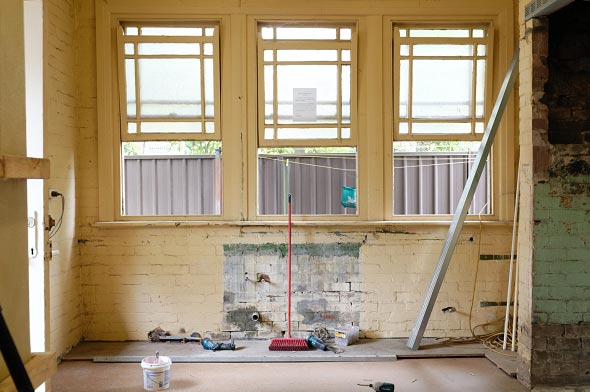Right here below you can discover lots of sensible additional info on the subject of Reducing Your Risk Of Water And Fire Damage At Home.

Water provides life, however water breach on some components where it's not meant to be can result in damages as well as trouble. In addition, homes with water damage smell moldy as well as old.
Water can originate from lots of sources like typhoons, floods, ruptured pipelines, leakages, as well as sewer problems. If you have water damage, it's much better to have a working understanding of safety preventative measures. Right here are a couple of standards on how to handle water damages.
Do Prioritize Residence Insurance Coverage Coverage
Seasonal water damage can originate from floodings, seasonal rainfalls, and wind. There is likewise an incident of an unexpected flooding, whether it originated from a damaged pipeline that instantly breaks right into your residence. To protect your home, get home insurance policy that covers both disasters such as all-natural calamities, and also emergency situations like damaged plumbing.
Don't Neglect to Switch Off Energies
When calamity strikes and also you're in a flood-prone location, shut off the main electric circuit. Switching off the power avoids
electrical shocks when water comes in as water acts as a conductor. Do not neglect to turn off the primary water line shutoff as a way to prevent more damages.
If the floodwaters are getting high, keep your furniture steady as they can move around as well as create added damage.
Do Remain Proactive and Heed Climate Notifies
If you live in a location afflicted by floodings, stay proactive as well as prepared at all times. Pay attention to the information as well as discharge warnings if you live near a body of water like a river, lake, or creek .
Do Not Neglect the Roof
Prior to the weather transforms frightful as well as for the worse, do a roof covering evaluation. A much better behavior is to have a yearly roofing evaluation to alleviate future troubles and complicated problems. An excellent roof with no holes and also leaks can be an excellent shield versus the rain and also a tool to avoid rain damages. Your roofing professional ought to care for the defective seamless gutters or any other signs of damage or weakening. An evaluation will prevent water from moving down your wall surfaces and soaking your ceiling.
Do Focus On Tiny Leakages
There are red flags that can attract your attention and also suggest to you some weakened pipelines in your residence. Signs of red flags in your pipes include bubbling paint, peeling off wallpaper, water streaks, water stains, or leaking audios behind the wall surfaces. Repair work and examine your plumbing fixed before it results in enormous damage to your house, finances, as well as an individual problem.
Don't Panic in Case of a Burst Pipeline
Timing is key when it comes to water damages. If a pipe ruptureds in your home, promptly shut off your primary water valve to cut off the resource as well as stop more damages. Call a trustworthy water damages repair expert for assistance.
Water offers life, but water invasion on some parts where it's not supposed to be can result in damages and hassle. In enhancement, residences with water damages scent mildewy and old.
Seasonal water damages can come from floods, seasonal rainfalls, and wind. Indications of red flags in your pipelines include gurgling paint, peeling wallpaper, water streaks, water spots, or leaking audios behind the walls. If a pipeline ruptureds in your house, right away closed off your primary water valve to reduce off the resource as well as avoid even more damage.
Some Do's & Don't When Dealing with a Water Damage
DO:
Make sure the water source has been eliminated. Contact a plumber if needed. Turn off circuit breakers supplying electricity to wet areas and unplug any electronics that are on wet carpet or surfaces Remove small furniture items Remove as much excess water as possible by mopping or blotting; Use WHITE towels to blot wet carpeting Wipe water from wooden furniture after removing anything on it Remove and prop up wet upholstery cushions for even drying (check for any bleeding) Pin up curtains or furniture skirts if needed Place aluminum foil, saucers or wood blocks between furniture legs and wet carpet Turn on air conditioning for maximum drying in winter and open windows in the summer Open any drawers and cabinets affected for complete drying but do not force them open Remove any valuable art objects or paintings to a safe, dry place Open any suitcases or luggage that may have been affected to dry, preferably in sunlight Hang any fur or leather goods to dry at room temperature Punch small holes in sagging ceilings to relieve trapped water (don't forget to place pans beneath!); however, if the ceiling is sagging extremely low, stay out of the room and we'll take care of it DO NOT:
Leave wet fabrics in place; dry them as soon as possible Leave books, magazines or any other colored items on wet carpets or floor Use your household vacuum to remove water Use TV's or other electronics/appliances while standing on wet carpets or floors; especially not on wet concrete floors Turn on ceiling fixtures if the ceiling is wet Turn your heat up, unless instructed otherwise

As an enthusiastic reader on What You Can Do At Home To Prevent Fire And Water Damage, I figured sharing that topic was essential. Remember to take a moment to share this write-up if you enjoyed it. Thanks for your time. Visit again soon.